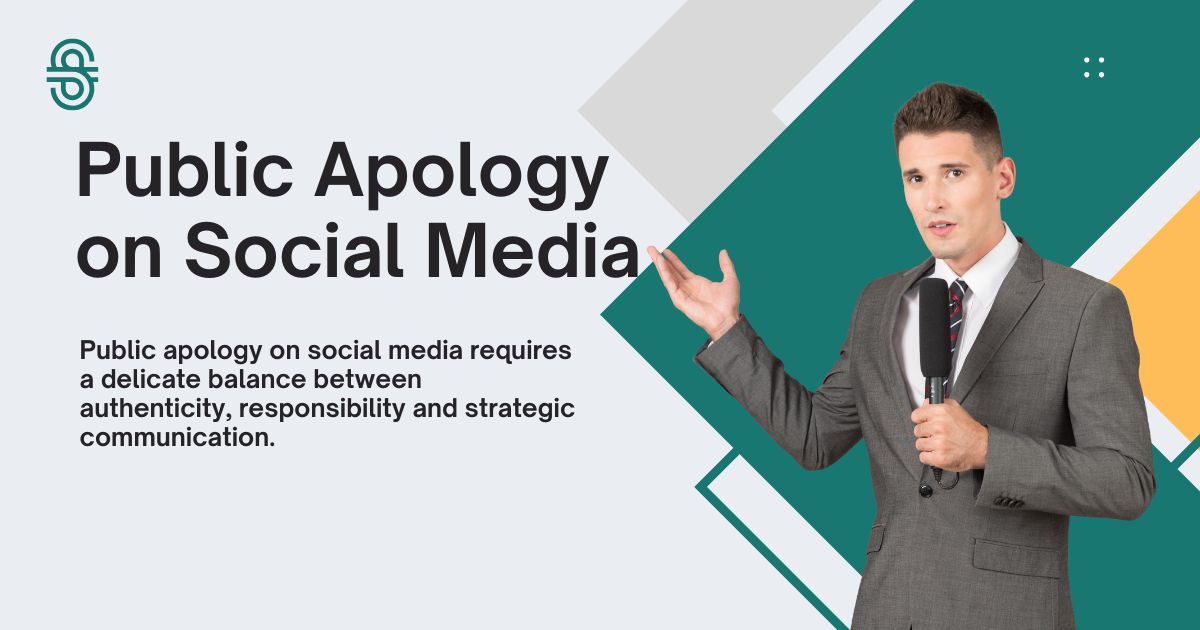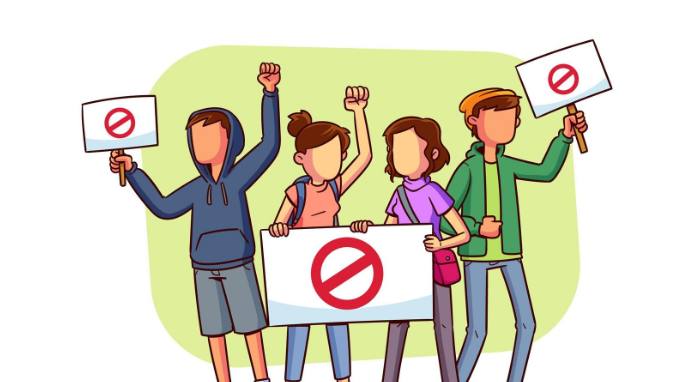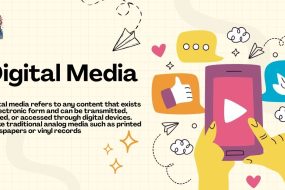
A single Missstep can be a spiral into a fully developed crisis on social media within hours. A bad word tweet, an insensitive post or a tone-cheer response can damage your reputation and separate the audience. When errors occur, a well -designed public waiver can mean the difference between recovery and long -term damage to your brand or personal reputation.
Public apology on social media requires a delicate balance between authenticity, responsibility and strategic communication. This guide will run through the essential elements of preparing an effective waiver on social media that rebuild confidence, shows real remorse and helps you move on creatively.
Understanding When a Public Apology Is Necessary
Not every mistake requires a public apology. Understanding when to apologize publicly versus privately can save you from unnecessary scrutiny while ensuring you address legitimate concerns appropriately.
Signs You Need a Public Apology
A public apology becomes necessary when your actions or words have caused widespread harm, offense, or misunderstanding. If your original post, comment, or action was public and has generated significant negative response, a public apology is usually warranted.
Look for these indicators that suggest you need to apologize publicly:
- Multiple people are expressing hurt, anger, or disappointment
- Your content has been widely shared with negative commentary
- Media outlets or influencers are discussing your mistake
- The issue affects a group of people or community
- Your actions contradict your stated values or brand message
When Private Communication Might Be More Appropriate
Sometimes a direct message or private conversation works better than a public statement. Consider private outreach when the issue involves a small number of people, contains sensitive personal information, or requires detailed explanation that wouldn’t fit well in a public post.
The Anatomy of an Effective Social Media Apology

A strong public apology follows a specific structure that addresses the harm caused, takes responsibility, and outlines steps for improvement. Each element plays a crucial role in rebuilding trust and demonstrating genuine accountability.
Read our latest blog What is Real-Time Crisis Communication?
Start with Clear Acknowledgment
Begin your apology by clearly stating what you did wrong. Avoid vague language like “if anyone was offended” or “mistakes were made.” Instead, specifically acknowledge the action or statement that caused harm.
For example, rather than saying “I’m sorry if my post upset people,” try “I’m sorry for sharing content that perpetuated harmful stereotypes about [specific group].”
Take Full Responsibility
Accept complete responsibility for your actions without making excuses or shifting blame. This means avoiding phrases like “I was having a bad day” or “That’s not who I really am” as primary explanations for your behavior.
Own your mistake directly: “I made a poor decision when I posted that content. There’s no excuse for my actions, and I take full responsibility.”
Express Genuine Remorse
Your apology should convey authentic regret for the harm caused. Focus on the impact of your actions on others rather than how the situation affects you. Show that you understand why people are upset and that you genuinely care about the harm you’ve caused.
Explain Your Actions (Without Making Excuses)
Sometimes providing context helps people understand how the mistake happened, but be careful not to turn explanations into excuses. If you choose to explain, keep it brief and make it clear that the explanation doesn’t justify your actions.
Outline Concrete Steps for Improvement
People want to see that you’re committed to doing better. Outline specific actions you’ll take to prevent similar mistakes in the future. This might include education, policy changes, donations to relevant causes, or other meaningful steps.
Platform-Specific Considerations
Different bad side of social media have unique characteristics that affect how you should craft and deliver your apology. Understanding these nuances helps ensure your message resonates effectively with your audience.
Twitter/X Apologies
Twitter’s character limit requires concise, impactful language. If your apology is longer than a single tweet, consider using a thread to maintain coherence. Number your tweets to help readers follow the complete message.
Pin your apology tweet to the top of your profile to ensure visibility. This shows that you’re not trying to hide from the issue and makes it easy for people to find your response.
Instagram Apologies
Instagram offers more space for detailed explanations through captions and Stories. Use the caption for your main apology and consider addressing additional points in Stories, which allow for more casual, conversational follow-up.
Choose your visual element carefully. A simple, text-based graphic or a sincere video message often works better than trying to maintain your usual aesthetic when apologizing.
Facebook Apologies
Facebook’s format allows for longer-form apologies that can include more detail and context. Use this space to provide a comprehensive response, but keep paragraphs short and readable.
Consider whether to allow comments on your apology post. While engagement can help show you’re listening, it can also provide a platform for additional criticism or debate.
LinkedIn Apologies
Professional apologies on LinkedIn should maintain a business-appropriate tone while still being genuine and accountable. Focus on how your actions affected your professional community and what you’re learning from the experience.
TikTok and Video Apologies
Video apologies can feel more personal and authentic, but they also require careful preparation. Practice your key points beforehand, but avoid sounding overly rehearsed. Maintain eye contact with the camera and speak clearly and sincerely.
Guide to When bad content goes viral
Common Apology Mistakes to Avoid
Many public apologies fail because they include elements that undermine their effectiveness. Recognizing these common mistakes helps you craft a more successful response.
The Non-Apology Apology
Phrases like “I’m sorry if you were offended” or “I apologize if my words were misunderstood” shift responsibility to the audience rather than accepting accountability. These non-apologies often make situations worse by appearing insincere.
Playing the Victim
Focusing on how the backlash has affected you rather than the harm you caused alienates your audience further. Statements like “I’m getting death threats” or “This has been devastating for my family” may be true, but they shouldn’t be the focus of your apology.
Bringing Up Past Good Deeds
Reminding people of your previous positive actions or charitable work can appear manipulative. Let your apology stand on its own merit rather than trying to balance the scales with past behavior.
Apologizing for the Wrong Thing
Make sure you understand what people are actually upset about before crafting your response. Apologizing for the wrong aspect of your actions shows you’re not truly listening to the concerns being raised.
Defensive Language
Avoid getting defensive or argumentative in your apology. Phrases like “That’s not what I meant” or “You’re taking this out of context” undermine your accountability and sincerity.
The Role of Timing in Public Apologies

When you apologize matters almost as much as what you say. Acting quickly shows you’re taking the situation seriously, but rushing can lead to poorly crafted responses that make things worse.
Moving Quickly Without Rushing
Aim to respond within 24-48 hours of recognizing you need to apologize. This timeframe allows you to craft a thoughtful response while still showing urgency. If you need more time to understand the full scope of the issue, consider posting a brief acknowledgment that you’re aware of the concerns and working on a full response.
Avoiding Crisis Communication Paralysis
Sometimes the fear of saying the wrong thing prevents people from saying anything at all. While caution is important, complete silence often makes situations worse. A sincere, well-intentioned apology is usually better than no response at all.
Following Up After Your Apology
Your apology is just the beginning of rebuilding trust. How you behave after apologizing often matters more than the apology itself.
Demonstrating Change Through Actions
Follow through on the commitments you made in your apology. If you promised to educate yourself on a topic, share what you’re learning. If you committed to policy changes, implement them and report on progress.
Handling Ongoing Criticism
Not everyone will accept your apology, and that’s okay. Respond to ongoing criticism with patience and humility. Avoid arguing with critics or demanding forgiveness. Instead, focus on consistently demonstrating positive change.
Knowing When to Move Forward
While it’s important to follow through on your commitments, continuously referencing your mistake can prevent you from moving forward. After you’ve apologized and demonstrated change, gradually return to your normal content while maintaining the lessons you’ve learned.
Moving Forward With Integrity
A well -prepared waiver opens the door to reconstruct confidence, but permanent recovery depends on the constant positive behavior. Use your error as an opportunity to learn to become more thoughtful in your communication and more sensitive to the public’s needs.
Consider developing a material review process to prevent similar errors. This may involve undergoing sensitive materials before posting others or taking more time to consider the possible effect of your words.
Remember that everyone makes mistakes, and how to deal with them often defines your character more than errors. A real, well -done pardon after continuous positive action can actually strengthen the relationship with the audience and increase your reputation in the long term.
The key to effective waiver on social media shows real responsibility, clear communication and commitment to improvement. By following these guidelines, you can navigate in challenging situations with integrity and emerge strongly from experience.



















No Comments